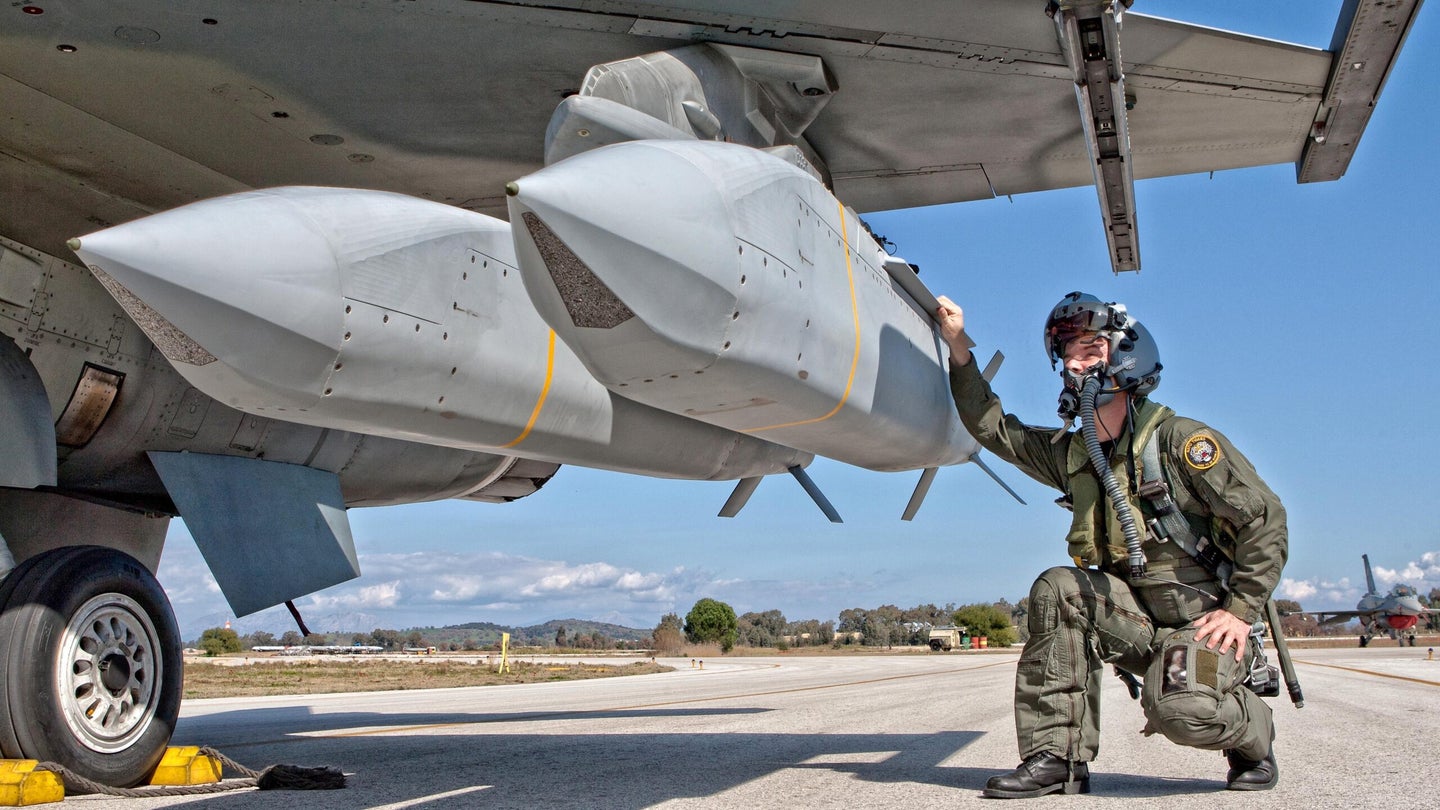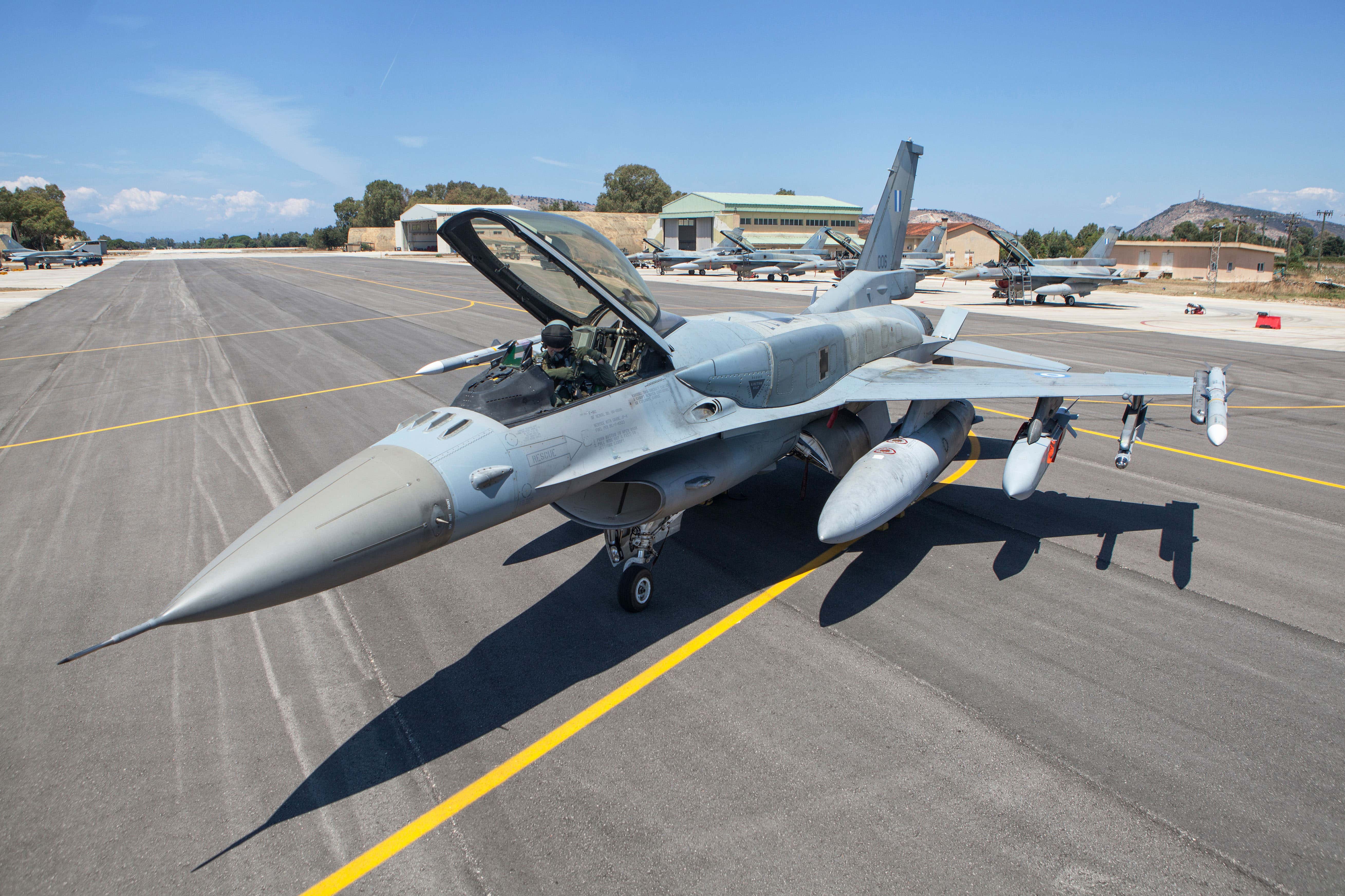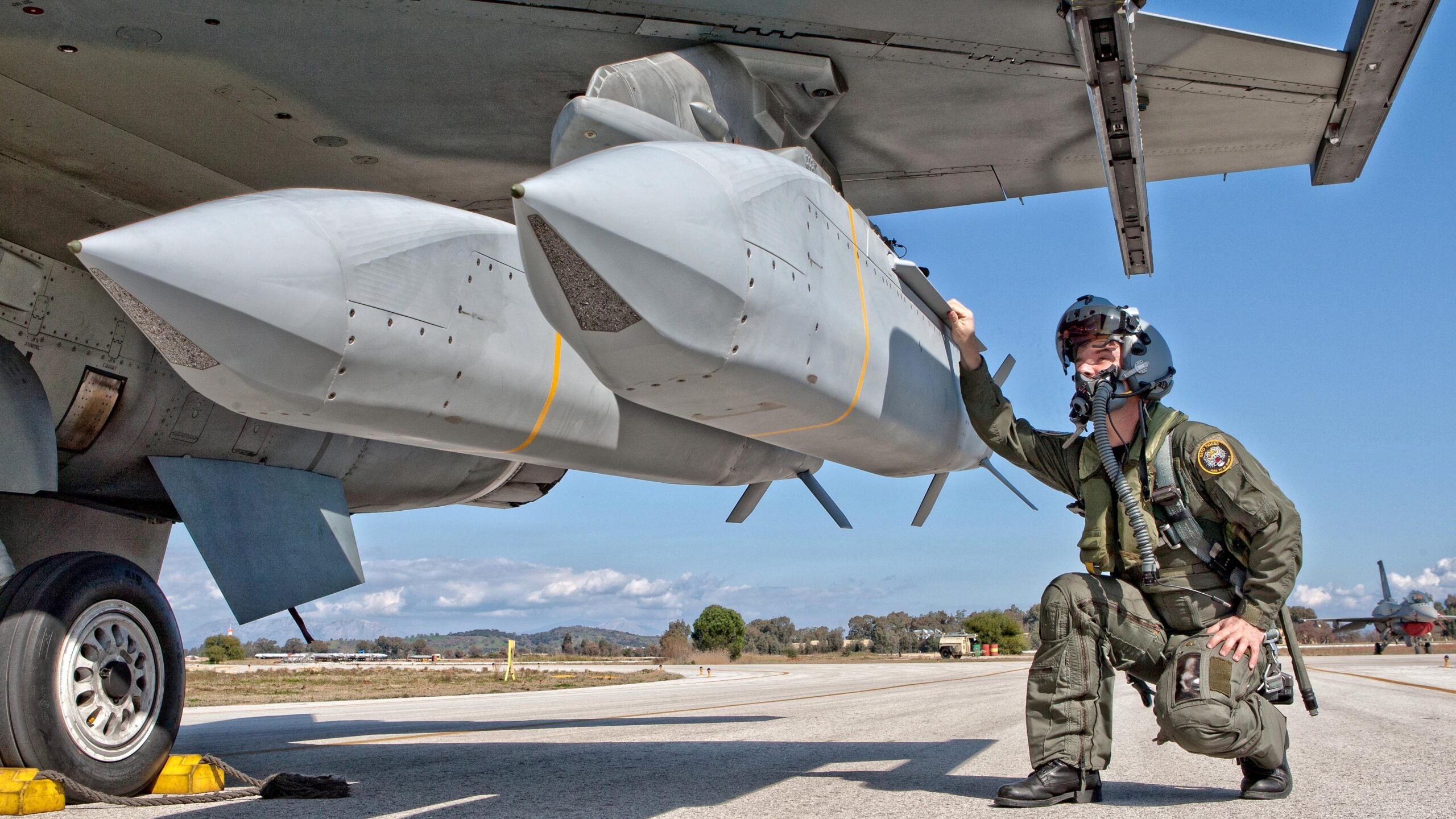Zarvan
ELITE MEMBER

- Joined
- Apr 28, 2011
- Messages
- 54,470
- Reaction score
- 87
- Country
- Location
Greek F-16s Pack A Serious Punch With Their Super-Rare Twin JSOW Weapon Racks
The Hellenic Air Force uses multiple carriage racks for its Joint Stand-Off Weapons to provide a significant boost in long-range strike capability.
BY THOMAS NEWDICK FEBRUARY 14, 2022
SHARE
THOMAS NEWDICK View Thomas Newdick's Articles
@CombatAir
As the spearhead of Greece’s Hellenic Air Force, or HAF, the F-16 Viper is expected to fly a wide variety of wartime roles, from dogfighting over the contested Aegean Sea, to real-time tactical reconnaissance, and long-range strike over land or water with an array of precision weapons. In the overland strike category, the HAF has become one of the few air forces — perhaps the only one — that outfit its Vipers with twin launchers for the AGM-154 Joint Standoff Weapon (JSOW), a stealthy 1,000-pound class long-range glide bomb designed to hit some of the enemy’s most important targets. You can read more about the HAF and how it compares to its Turkish rival here.
Photos of the unusual twin-rack JSOW pylon attached to Greek F-16s have been gaining a fair amount of attention on social media recently, but the HAF has actually been exploiting this capability for some time now. Typically, an F-16, or any fighter jet, for that matter, might be expected to load a pair of JSOWs, or perhaps a heavy load of four on four individual pylons. Greece’s F-16s, however, use the BRU-57/A smart multiple carriage rack that allows a single pylon to carry two JSOWs or any other compatible 1,000-pound class weapons, for that matter.

IOANNIS LEKKAS
A Hellenic Air Force F-16C Block 52+ Advanced with four JSOWs on one pylon under the port wing.
The BRU-57/A was originally developed to meet a U.S. Air Force requirement to boost the F-16’s weapon load for improved mission effectiveness, doubling the firepower (and the number of targets) that can be engaged using the weapons on one pylon. Seeing a pair of Joint Direct Attack Munitions (JDAMs) on a BRU-57/A rack is not altogether unusual for a U.S. Air Force Block 40/50 F-16C/D, but JSOWs are far less common. In fact, as far as we know, you might have to go all the way to Greece to see this load-out in real life.

U.S. AIR FORCE/SENIOR AIRMAN KAYLA NEWMAN
A U.S. Air Force F-16 on the flight line at Bagram Airfield, Afghanistan, armed with JDAMs on BRU-57/A racks.
For the HAF, the JSOW, in general, is allocated to the units flying the most advanced Block 52+ advanced versions of the F-16. These jets, also known as Block 52M aircraft, are the most recent to be ordered by Athens, under a contract signed in December 2005, dubbed the Peace Xenia IV program. The deal covered 20 single-seat F-16C and 10 dual-seat F-16D versions, plus weapons. These jets are part of a wider HAF Viper fleet that today numbers around 150 aircraft.
Even without a four-pack of JSOWs, the Block 52+ Advanced jets are formidable long-range strike aircraft, aided in this role by their optional conformal fuel tanks. As well as IRIS-T and AIM-120C-7 Advanced Medium-Range Air-to-Air Missiles to deal with aerial threats, the Block 52+ Advanced jets can carry Enhanced Paveway II dual-mode guided bombs and JDAMs.

IOANNIS LEKKAS
A pair of live JSOWs on a BRU-57/A rack.
The JSOW, however, provides a very specific ability to knock out static targets at extended ranges. Despite being unpowered, the AGM-154C version used by the HAF F-16s has a range of over 70 miles, depending on flight profile, so it can be launched from outside the range of the enemy’s air defense systems.
Even with a launch from 500 feet, the JSOW can hit a target more than 12 miles away, which represents a significant improvement over the JDAM, for example, which would reportedly need to be launched from over 20,000 feet to reach a similar distance.

IOANNIS LEKKAS
F-16C Block 52+ Advanced serial 011 in a long-range strike configuration with conformal fuel tanks and four-pack of JSOWs.
According to the U.S. Navy, the 500-pound blast/fragmentation/penetrator warhead used in the AGM-154C variant is optimized for use against “industrial facilities, logistical systems, and hardened tactical targets,” such as command bunkers.
The AGM-154C uses combined GPS and inertial navigation to get to the vicinity of the target before employing an imaging infrared sensor for final target acquisition, which is immune to radio-frequency jamming.
The JSOW is far from easy to shoot down, with no meaningful infrared signature and a very small radar cross-section.
A Royal Australian Air Force F/A-18F Super Hornet launches an AGM-154C:
For the HAF, which has a longstanding history of animosity with fellow NATO member Turkey, the JSOW would be one of the most important weapons should the two countries ever go to war again. With no shortage of high-value assets, including air defense systems and command and control nodes to address in such a scenario, having the maximum number of JSOWs loaded on each jet makes a lot of sense.
Indeed, according to Ioannis Lekkas, a defense journalist who has worked closely with the HAF in the past, a four-JSOW load-out is now relatively common among F-16s assigned quick reaction alert (QRA) duties. This is particularly the case since the uptick in Greece-Turkey tensions in 2020, mainly related to control of oil and gas reserves and maritime rights in the eastern Mediterranean.

IOANNIS LEKKAS
A different JSOW load-out, combining the weapons with underwing fuel tanks, plus IRIS-T and AMRAAM missiles for self-defense.
Putting JSOWs on twin racks also means that the F-16 can carry additional air-to-air armament under the wings, improving its chance of survival in the face of aerial opposition. Reportedly, the HAF also received Wind Corrected Munitions Dispensers (WCMD) for its later F-16s, which would open up the possibility of carrying one WCMD and one JSOW on a single hardpoint, if required.
The expanded requirement for firepower on each QRA jet has also been reflected on HAF F-16s assigned air-to-air duties, with aircraft now being fitted more routinely with five AMRAAMs plus an infrared-guided Sidewinder. We’ve also seen similar load-outs recently on U.S. Air Force F-16s operating around potential flashpoints in the South China Sea as well as in Eastern Europe.

IOANNIS LEKKAS
The F-16 has served the HAF since 1988 and, with a large-scale modernization program underway, the Viper will remain the backbone of the air arm for many years to come. The modernization plan will further enhance the Block 52+ Advanced jets, adding the AN/APG-83 Scalable Agile Beam Radar (SABR) with active electronically scanned array (AESA), Raytheon Modular Mission Computer, and an advanced cockpit with the second-generation Joint Helmet Mounted Cueing System (JHMCS ΙΙ).
The Greek F-16’s ability to carry four JSOWs thanks to the BRU-57/A rack will ensure it can bring to bear a very significant long-range strike capability in the Aegean theater and elsewhere.
Contact the author: thomas@thedrive.com

Greek F-16s Pack A Serious Punch With Their Super-Rare Twin JSOW Weapon Racks
The Hellenic Air Force uses multiple carriage racks for its Joint Stand-Off Weapons to provide a significant boost in long-range strike capability.





